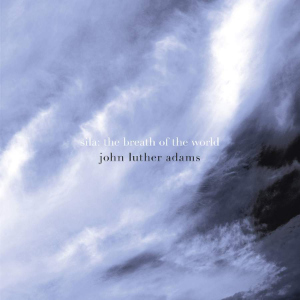
John Luther Adams (b.1953)
Sila: the Breath of the World
The Crossing
JACK Quartet
Musicians of The University of Michigan Department of Chamber Music
University of Michigan Percussion Ensemble
rec. 2021, Hill Auditorium, Ann Arbor; Christ Church Christiana Hundred, Wilmington, USA
CANTALOUPE CA21177 [57]
Sila: The Breath of the World defies positive or negative criticism. To try to evaluate it as a work of music is as impossible as it is pointless, so diffuse are its terms of reference and the way they are executed. Even to describe it is tricky. As I try to do these things, I hope readers will excuse the unusually personal tone, as well as the extent to which I quote the composer’s own words.
For newcomers to the music of John Luther Adams, here is a succinct introduction taken from his website: ‘For John Luther Adams, music is a lifelong search for home – an invitation to slow down, pay attention, and remember our place within the larger community of life on earth. Living for almost 40 years in northern Alaska, JLA discovered a unique musical world grounded in space, stillness, and elemental forces. In the 1970s and into the ’80s, he worked full time as an environmental activist. But the time came when he felt compelled to dedicate himself entirely to music. He made this choice with the belief that, ultimately, music can do more than politics to change the world.’
A few more words from the composer, taken from the CD cover, might help prepare the listener for Sila: ‘Sila is scored for five ensembles of 16 musicians – woodwinds, brass, percussion, strings, and voices – who may perform the music in any combination, successively or simultaneously, outdoors, or in a large indoor space. The musicians are dispersed widely, surrounding the listeners, who are free to move around and discover their own individual listening points.’
And finally: ‘In Inuit tradition the spirit that animates all things is Sila, the breath of the world. Sila is the wind and the weather, the forces of nature. But it’s also something more. Sila is intelligence. It’s consciousness. It’s our awareness of the world around us, and the world’s awareness of us. In this time when we humans are so dramatically changing the earth, Sila: The Breath of the World is an invitation to stop and listen more deeply.’
It would be fascinating to view the score of Sila. Throughout its 56 minutes almost nothing happens. Certain musical elements do rise to the surface. A trumpet plays a rising four-note scale, for instance, and the latter part of the work is dominated by vocalised triads, but for the most part the music is made up of long, held notes, always quiet, presented in slowly varying combinations and forms. Deep percussion rolls punctuate the texture. The composer also refers to the notes ‘between the cracks’ of the piano keyboard, and the ear certainly perceives these microtonal elements. It would be easy to describe the effect as hypnotic, but that would be a lazy response, an easy way out. No, this truly ‘minimalist’ music held my attention whilst allowing my mind to wander and reflect. Adams is an active environmentalist, and though it would be disingenuous to say that this work led me to ponder on precisely that range of subjects, the fact is that the link between the theme and the music is undeniable. The long, gradual, ‘breathing’ close is deeply affecting.
Listeners will find on YouTube a video of the first performance at New York’s Lincoln Center in 2014, where you will also be treated to – I’m pretty sure it’s him – a glimpse of the composer applauding at the end. It is an extraordinary document, but I find the audio-only recording more moving because the absence of the visual element allows the mind to meander at will. The video is a recording of a single live performance, a remarkable demonstration of faith in the work. This new recording certainly has the cogency of a single event, but the Cantaloupe website informs us that lockdown conditions, amongst other constraints, meant that the different groups were recorded separately and slotted together later. This need not concern us: the performance itself, as far as one can judge – and nothing about this work can be ‘judged’ in the normal sense – is totally committed and convincing.
I had read about John Luther Adams’s music, of course, but this was my first encounter with it. I was sceptical to begin with, but it has opened my eyes, ears and mind to something quite new, and this was unexpected. I will certainly come back to it, though sitting down to an hour of near-static music calls for a particular mood or frame of mind. I suspect that this is not Adams at his most accessible, and perhaps not the best place to begin an exploration of his music. I will soon know, though, as I have already taken steps to hear more from him.
William Hedley
Previous review: David McDade (October 2022)
Help us financially by purchasing from





















